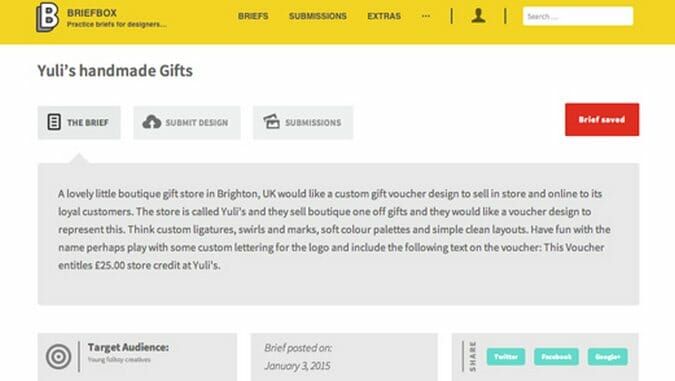For graphic designers, a solid portfolio is your calling card. It’s not enough to tell a potential client that you have the skills to make their wedding invitation “tasteful but also sexy and evocative of the beachfront, 1920s era dress code, but still subtle” or to make their startup’s logo “like beach waves, but also techy looking”; you have to be able to show them. Immediately. But without a client breathing down your neck and demanding greatness, it can be hard to make enough samples to prove your worth.
Brief box, a side project started by Joel Alexander, a U.K. based graphic designer and founder of The Orca Design Co, is a solution to the experience breeds experience cycle. Alexander writes seven briefs per week and posts five to six guest posts from professional graphic designers each month. The practice assignments include logos, illustration, layout, website design, iconography, and app/user interface projects. The site is free to use, and once you complete an assignment, you can upload it to share with members of the Briefbox community.
Brief box has also created an e-book currently available for pre-order on Amazon .
Finally, there’s also @artassignmentbot, a twitter bot created by Jeffrey Thompson. The bot posts multiple assignments per day, each with a time constraint ranging from a few seconds to a year. Unlike Briefbox briefs which include “client” specifications and inspiration, Art Assignment Bot’s prompts are vague, and more often than not, are better suited for an MBA thesis, or a chuckle and retweet rather than for a professional portfolio boost (example: “Create a dangerous project researching gender, due on Tue, Jan 19, 2016.”) Still worth a follow, and who knows, it may inspire you.
